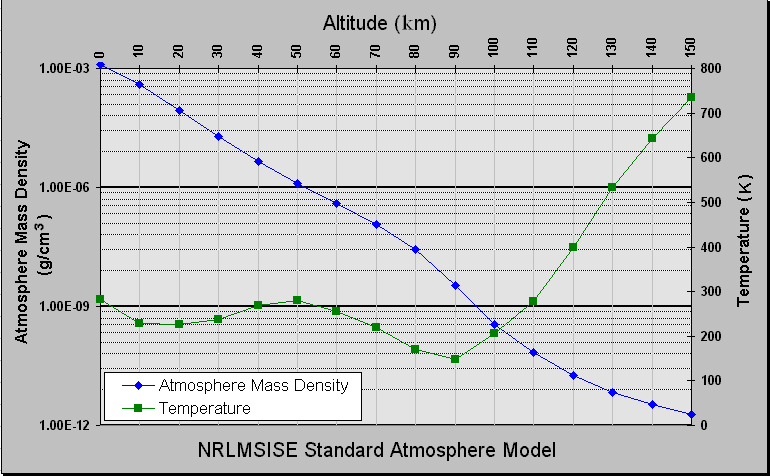
The ideal gas law tells us that pressure, temperature and density are related by the formula P=ρRT/M. The number density, number of molecules per unit volume, is n=ρ/m where m is the mass of the molecular component. Since the mass of a molecule is quite small the number of particles can still be quite large. This accounts for the atmospheric drag on a satellite. There is still some drag at higher altitudes.
When a meteor or satellite enters the atmosphere at high speeds a shock wave forms in front of it compressing the atmosphere. As the atmosphere is compressed it heats up and becomes luminous. Energy is released in the form of light by the Stefan-Boltzmann law. The pressure from the shock wave acting on the satellite slows it down and drops it out of orbit. Given enough time the satellite will reach a terminal velocity in the atmosphere which is much lower than its orbital velocity.
Meteors and spacecraft can skip off the atmosphere. During meteor showers the bolides pass through the upper atmosphere and can skip off it.
No comments:
Post a Comment